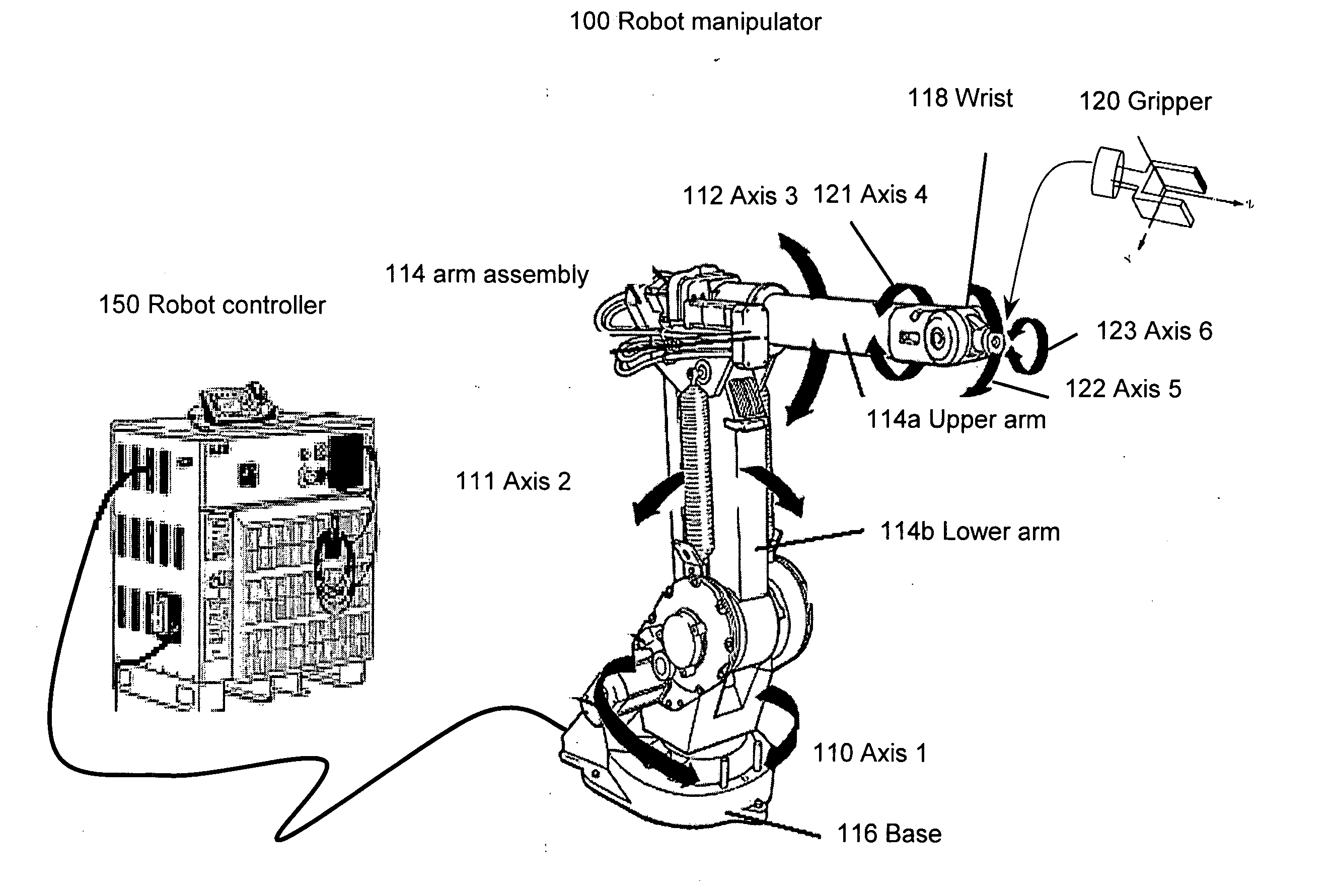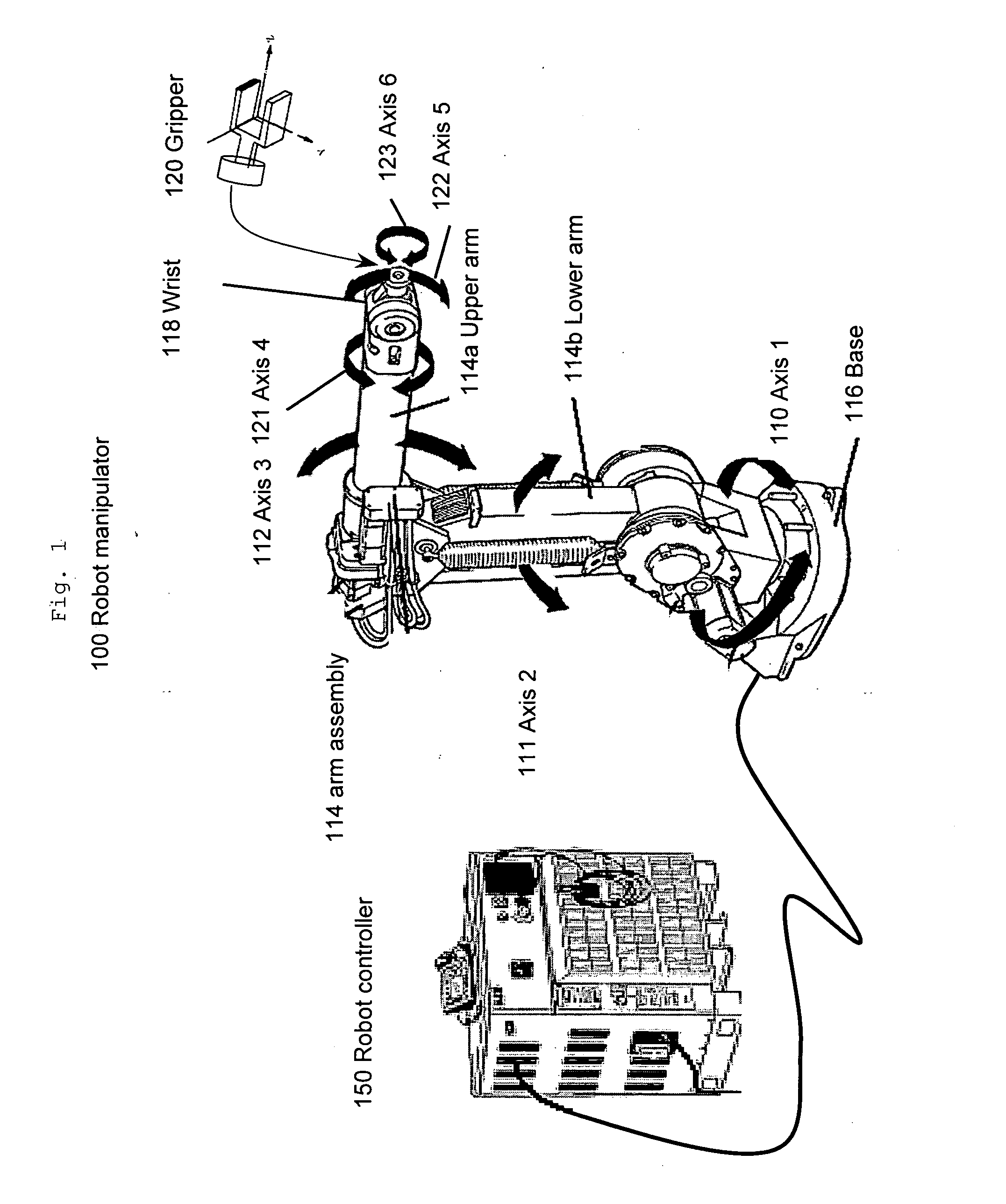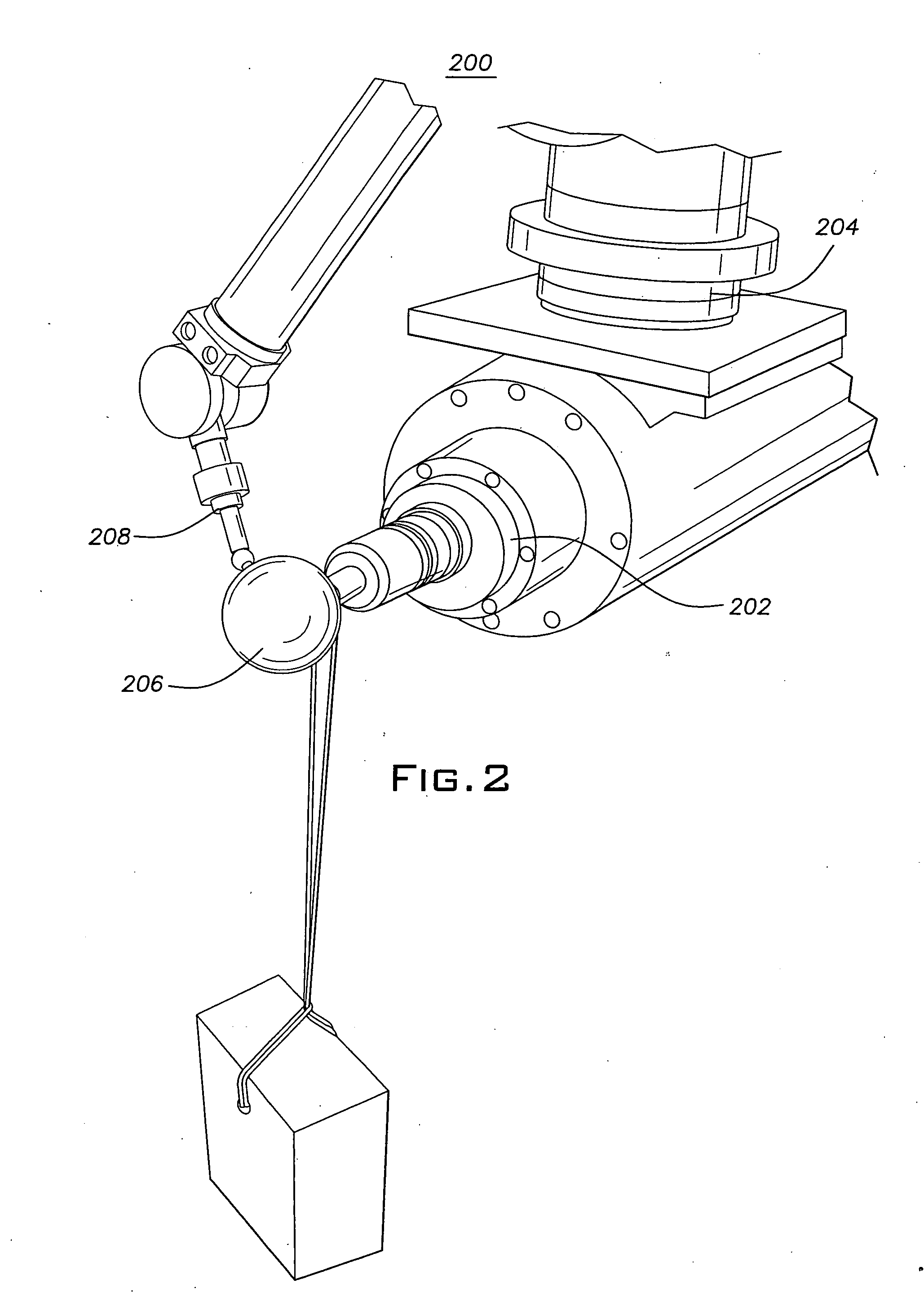Robotic machining with a flexible manipulator
- Summary
- Abstract
- Description
- Claims
- Application Information
AI Technical Summary
Benefits of technology
Problems solved by technology
Method used
Image
Examples
Embodiment Construction
[0037] As described above, the present invention improves the robotic machining accuracy by reducing machining force induced deformation. While thermal induced error is the largest error component for CNC machining, motion error due to machining force contributes to most of the total machining errors in robots. For example, a 500N cutting force during a milling process will cause a 1 mm position error for a robot instead of a less than 0.01 mm error for a CNC machine. Therefore, in order to achieve higher dimensional accuracy during robotic machining, the deformation due to the interactive force must be compensated.
[0038] Since force measurement and subsequent compensation is carried out in a 3-D Cartesian space, a stiffness model, which relates the force applied at the robot tool tip to the deformation of the tool tip in Cartesian space, is crucial to realize deformation compensation. The model should be accurate enough for the prediction of robot structure deformation under arbit...
PUM
| Property | Measurement | Unit |
|---|---|---|
| Force | aaaaa | aaaaa |
Abstract
Description
Claims
Application Information
 Login to View More
Login to View More - R&D
- Intellectual Property
- Life Sciences
- Materials
- Tech Scout
- Unparalleled Data Quality
- Higher Quality Content
- 60% Fewer Hallucinations
Browse by: Latest US Patents, China's latest patents, Technical Efficacy Thesaurus, Application Domain, Technology Topic, Popular Technical Reports.
© 2025 PatSnap. All rights reserved.Legal|Privacy policy|Modern Slavery Act Transparency Statement|Sitemap|About US| Contact US: help@patsnap.com



